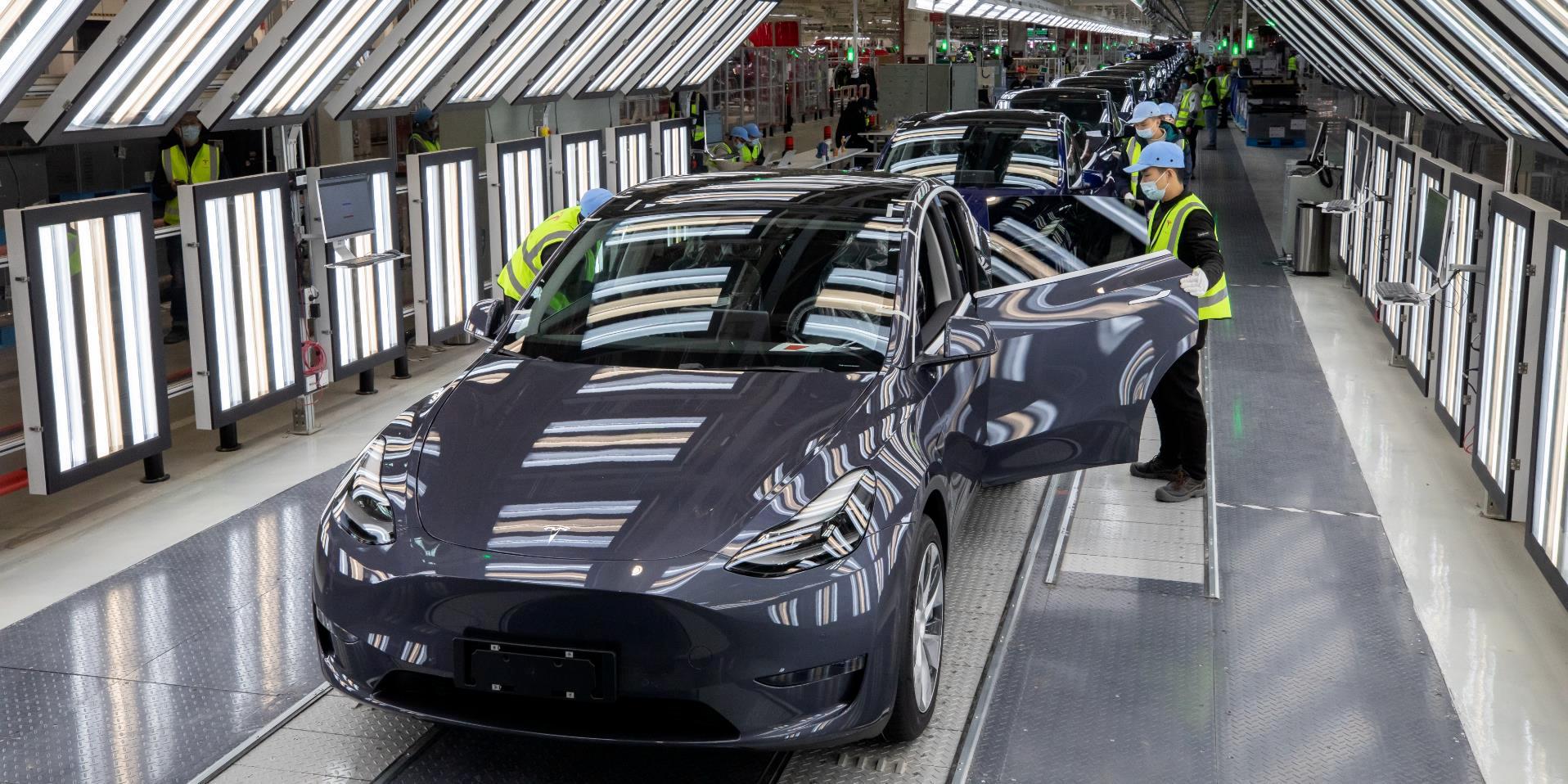
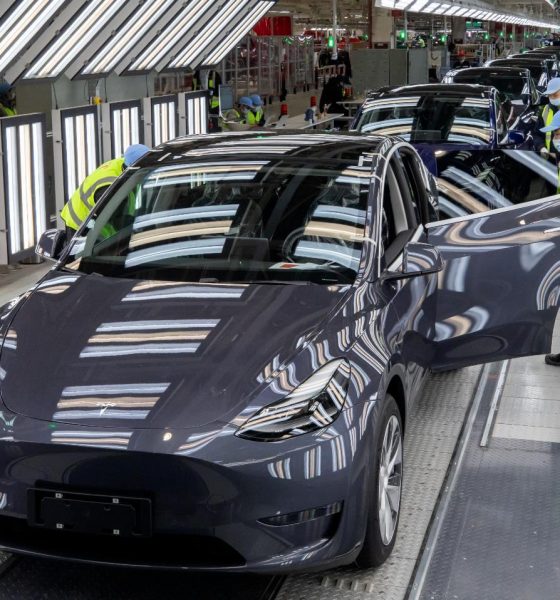
Investor's Corner
LIVE BLOG: Tesla (TSLA) Q4 and Full Year 2020 earnings call summary
Tesla’s (NASDAQ:TSLA) fourth-quarter and full year earnings call comes on the heels of an impressive quarter that saw the electric car maker post $10.7 billion in revenue and $903 million non-GAAP net income. With these results, Tesla has now maintained its profitability for six consecutive quarters.
As revealed in the company’s Q4 FY 2020 Update Letter, Tesla currently sits on $19.4 billion in cash, thanks to a capital raise of $5 billion that further strengthened the company’s war chest. This should allow Tesla to pursue its projects in the United States and abroad, particularly in Texas and Berlin, where two Gigafactories are currently being built. Tesla has also taken the wraps off the Model S and Model X refresh, ending a long period of speculation among electric vehicle enthusiasts.
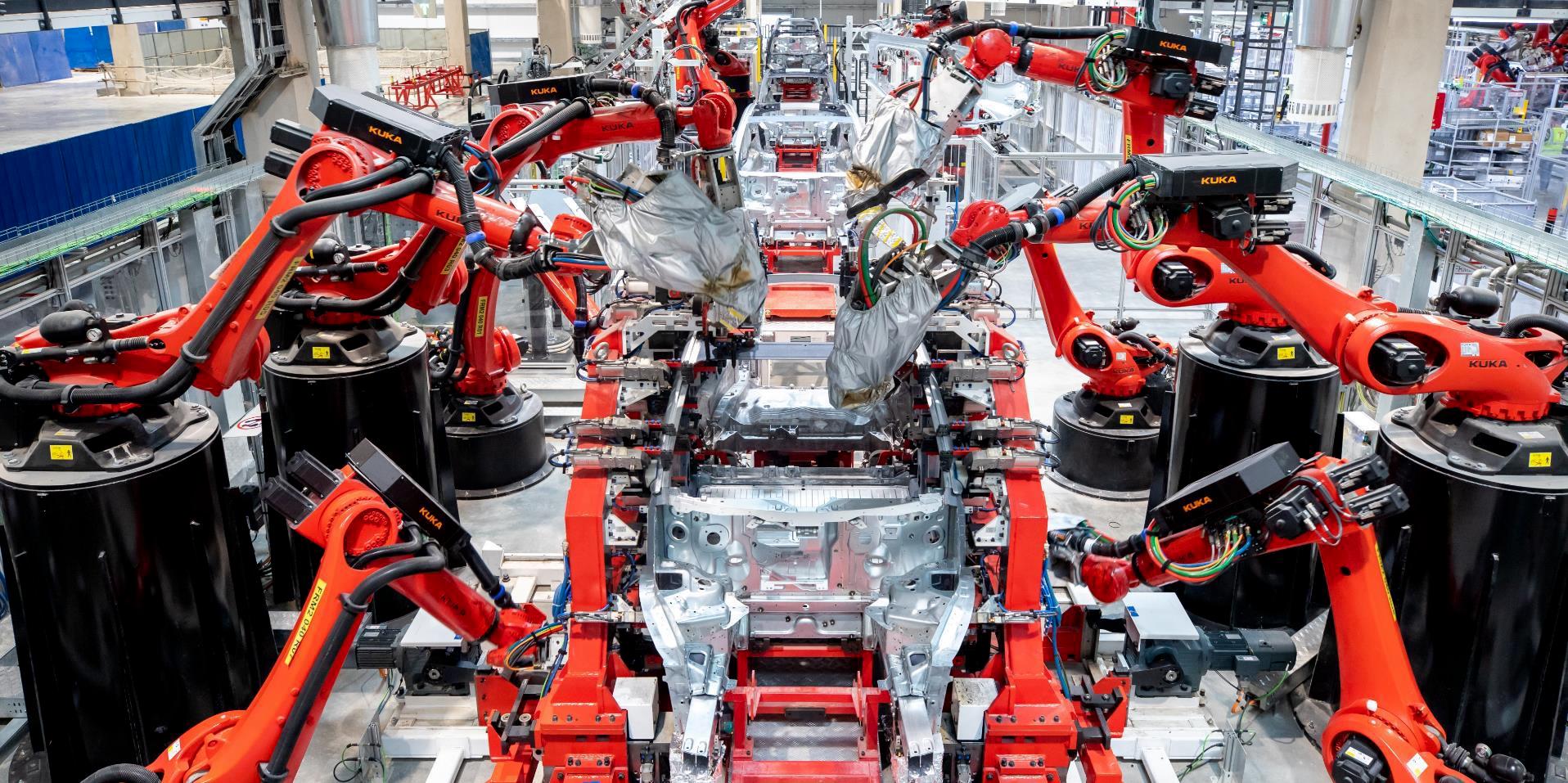
The following are live updates from Tesla’s Q4 FY 2020 earnings call. I will be updating this article in real-time, so please keep refreshing the page to view the latest updates on this story. The first entry starts at the bottom of the page.
16:34 PT – And that’s it for the Q4 FY 2020 earnings call, everyone! Tons of new info have been shared over the call, and considering what was discussed, it seems like 2021 would be a pretty exciting year once more. With that said, thanks for joining us this time once more for our live blog. We’ll see you in the Q1 2021 earnings call!
16:31 PT – Gene Munster from Loup Ventures asks about the Semi and if the vehicle is the first to achieve full autonomy considering that its routes are extremely predictable. Musk responds that this will indeed be the case. No retraining would be needed to adapt FSD for the Semi, the CEO explained, though some adjustments would need to be made.
16:28 PT – Emmanuel Rosner from Deutsche Bank asks about the cost efficiencies of the 4680 battery cell, as well as the company’s affordable car. Musk notes that three or four years would be a good timeframe to reach such goals. Baird, on the other hand, asks about X (Elon Musk’s possible umbrella company). Musk notes that he expects to be with Tesla for the next years. “I expect to be CEO of Tesla for several years in the future,” Musk said, though he noted that nobody should be CEO forever. “It would be nice to have more than free time in my hands,” Musk remarked, but “the mission is not over yet and there’s still a long way to go before we can make a dent in the world’s acceleration to sustainable energy.” The same is true for solar and stationary storage. There’s still so much work to be done.
16:23 PT – RBC Capital Markets asks about the electric van market. “Tesla is definitely going to make an electric van at one point,” Musk said, though he reiterates that the constraint lies in battery supply. He mentions the Semi, which uses a lot of cells. Musk notes that the Semi would make sense to produce once Tesla addresses its battery constraint. Simply put, when the 4680 is produced in volume, the Semi will come. Musk also talks about Tesla’s next-generation computer. He notes that Tesla’s next-gen chip would be 3x more powerful than the company’s current custom hardware, which is still not being utilized to its full potential today. “We’ve not been rushing the V2 computer. It’s coming along,” Musk said.
16:18 PT – Alex Potter from Piper Sandler asks about Tesla’s intention to increase its battery supply from its suppliers, and if suppliers need to produce 4680 cells. Musk notes that it does not. “It is not required,” Musk said, adding that even the new Model S still uses the 18650 form factor. He noted that Tesla will be retiring its old battery form factors in due time, but it’s better to have some flexibility. “Over time, it would make sense to have a consistency with battery form factor,” he adds. As for Tesla’s growth rate, Elon notes that Tesla poised to massive growth. “We do think we can maintain a growth rate of 50% for many years to come,” he said.
16:15 PT – Dan Levy from Credit Suisse asks about regulatory credits. Kirkhorn highlights that regulatory credit sales are difficult to forecast. He notes that most of Q4’ regulatory credit sales were not forecasted at all. They are simply not predictable. That being said, Tesla is not dependent on it nor does it rely on regulatory credits.
16:12 PT – Analyst questions begin. First up is from Oppenheimer asking about FSD regulations. Tesla notes that it will be all about reliability. There’s a slowdown in Europe, while China’s shown an interest in Level 4 or even Level 5 autonomy. As for the US, it will be all about how reliable autonomous software will be. As for the supply chain, Jerome Guillen notes that there are still challenges related to COVID, though work is underway to address this.
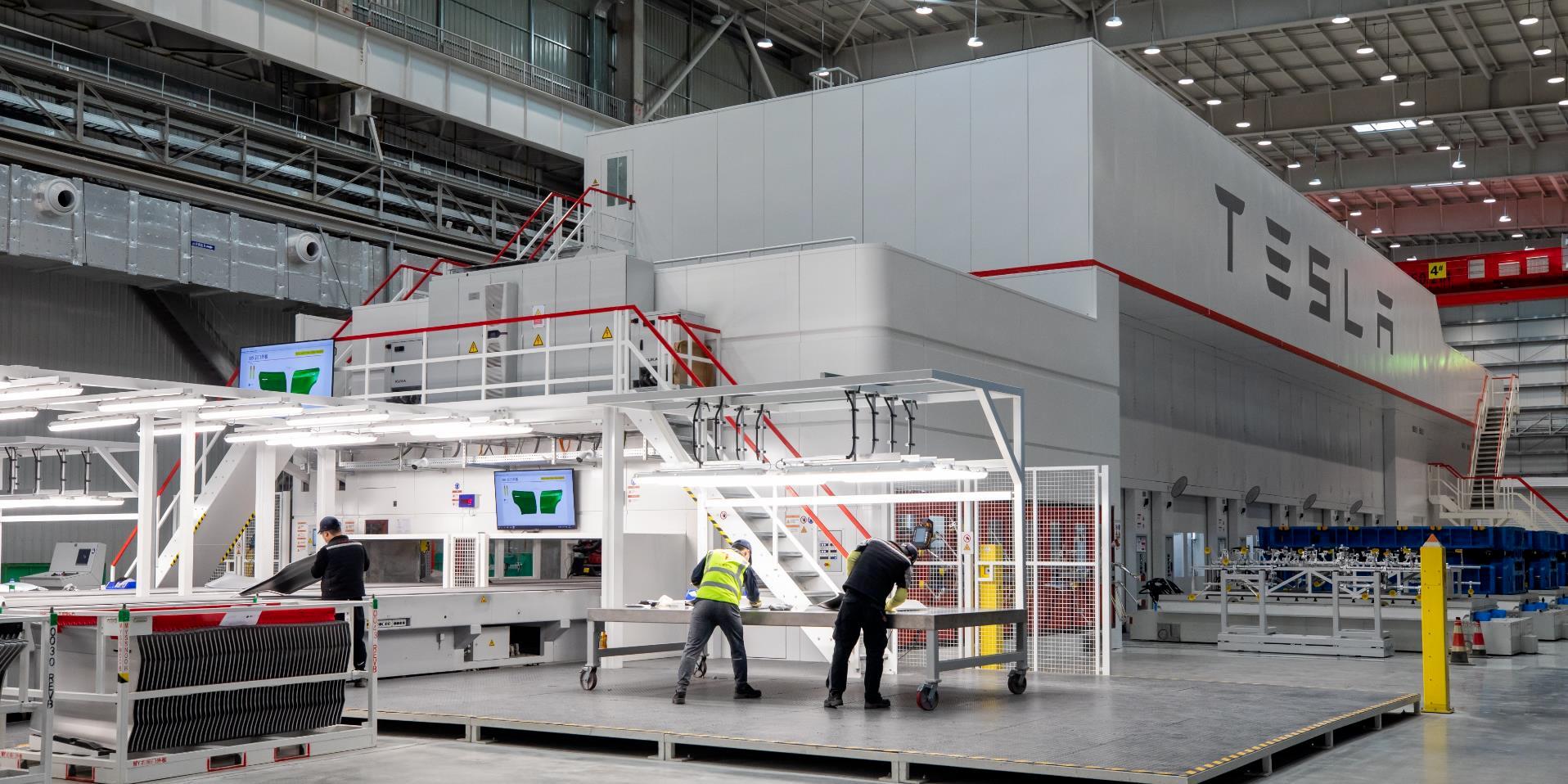
16:10 PT – As for Cybertruck development and 2021 deliveries, Musk stated that Tesla is finished with the vehicle’s engineering. Tesla has the necessary designs to make the Cybertruck work. Tesla will be using 8,000-ton press for the Cybertruck, which is more formidable than the Giga Press used for the Model Y, which is a 6,000-ton press.
16:08 PT – Elon also discusses Tesla’s China operations and its success, though he notes that FSD take rate in the country is conservative. He notes that Tesla has to work hard in ensuring that FSD and Autopilot work well in roads outside North America. As for Tesla’s long-term earnings being tied to profit per unit of battery capacity, Musk responded that this is indeed the case. EV makers can’t grow faster than their battery capacity. “Fundamentally, growth is dependent on cell production,” Musk said, noting that Tesla’s efforts to produce its own cells is to produce more batteries, not to compete with its suppliers. “Our goal with making our own cells is not to intimidate our suppliers. It is to supplement our suppliers,” Musk said.
16:04 PT – Addressing an inquiry from an institutional investor about Tesla’s possible plans to license its software like Autobidder to third party or OEMs. “We’re very open to licensing our software to other OEMs,” Musk said, adding that Tesla is in talks to license Autopilot to other companies. “We’re more than happy to license that to other car companies, and the same goes for Autobidder,” the CEO noted. He also mentions that the Supercharger Network will be fine for sharing too.
16:00 PT – Tesla service issues are addressed. Automotive Director Jerome Guillen notes that Tesla is looking to improve service amidst the company’s efforts to reduce service needs as possible. The executive noted that mobile service will play a huge part in this, with 40% of service needs in the US are now done through mobile. In terms of service appointments, Guillen notes that Tesla has 140 service centers in North America, with customers getting an appointment within 10 days. The pace of opening centers in North America is ramping, with Tesla planning on opening dozens in the first half of this year. He also explains that in terms of app vs phone support, apps are more robust. He notes that Tesla is investing everything it can on the app. “Our emphasis is on the app… It’s the way of the future,” he said.
15:57 PT – As for Tesla’s run rate for 4680 cell production, Elon Musk noted that the company is installing capacity to produce 200 GWh per year around 2022. Drew Baglino adds that with the S-curve of production, one could be off a bit, but Tesla is progressing through this S-curve as fast as possible.
15:52 PT – The second Say question from a retail investor is asked. FSD transfers. Elon notes that Tesla is not looking into this at this time. He mentions FSD’s price increases, and the fact that the market is undervaluing FSD considering its potential. He did note that Tesla will be offering subscriptions within the next month or two, which should help with pricing. As for the dry coating of the battery electrode for 4680 cells, VP of Technology Drew Baglino notes that the challenges are being addressed today. Tesla’s Roadrunner site in Fremont is getting better with its dry electrode process and its 4680 cell manufacturing. The setup for a 10 GWh annual production rate is there already. It’s only a matter of time.
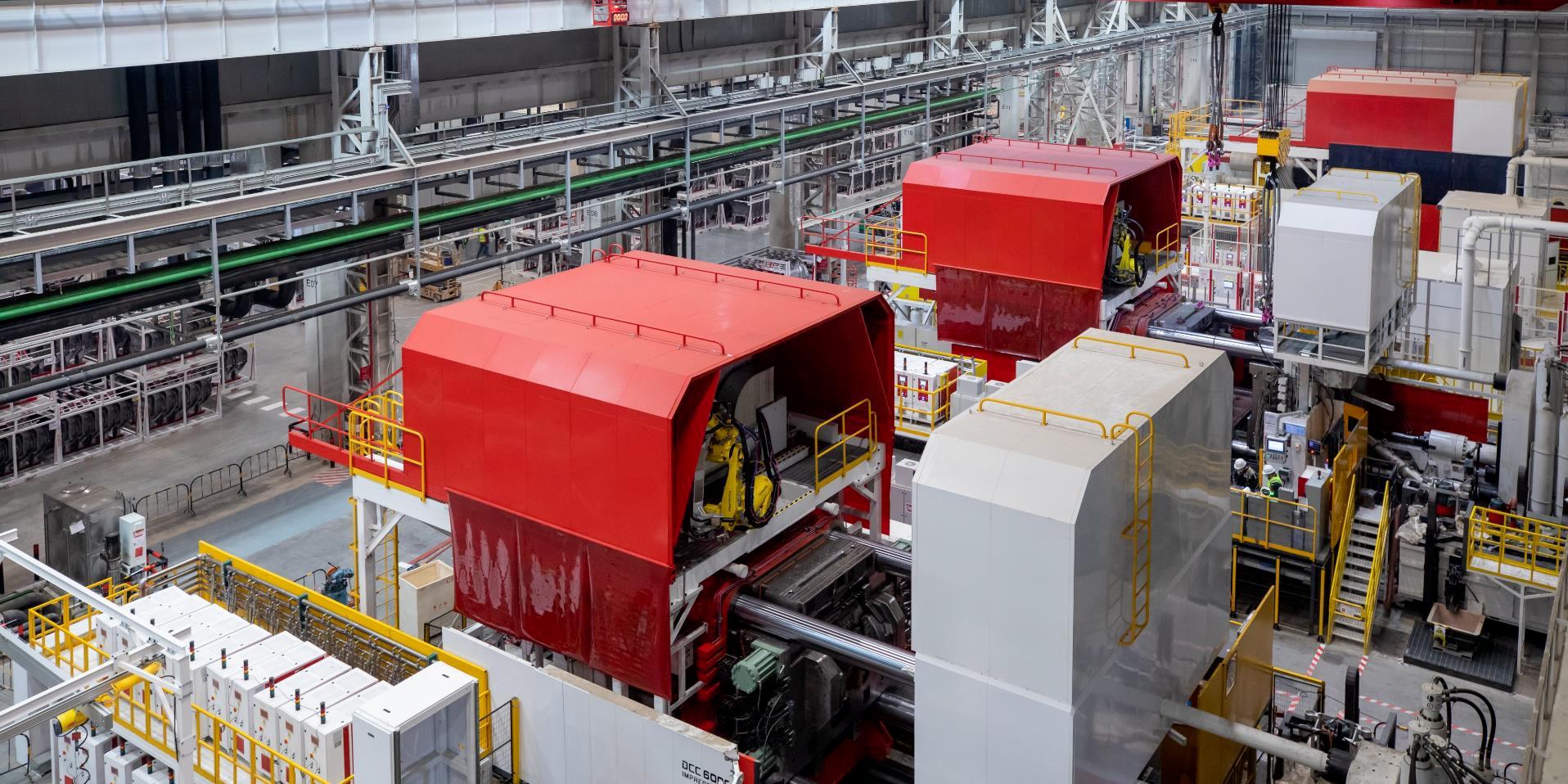
15:49 PT – The first questions from Say are asked. First up, “What is currently holding Tesla back from being the market share leader in solar?” Musk notes that Tesla does indeed plan on being the market share leader. He explains that attention is now being put on solar, which should improve its ramp. “It won’t be long before Tesla becomes the leader in solar.” Kirkhorn also highlights that having industry-leading pricing is pivotal in dominating the solar industry. This is something that Tesla is doing right now.
15:45 PT – CFO Zachary Kirkhorn takes the floor. He highlights Tesla’s strong free cash flow, which secures the company’s funds for its programs. He also mentions that Tesla relies less on debts now, especially as the company establishes its momentum with its sixth consecutive profitable quarter. He also explains automotive margins in Q4, noting that it was affected by the changes in the Model S and Model X line for the refresh, as well as the deployment of machines like the Giga Press in Fremont.
15:43 PT – Musk talks about how to justify Tesla’s high valuation. He explains that FSD will play a huge part in this. In conclusion, Musk noted that 2020 was just the beginning in terms of profitability. “It will be exciting,” he said. Provided that 2021 is relatively normal (unlike 2020), Musk is optimistic that Tesla can reach new heights. “We think 2021 will be more exciting…it’s going to be a great year for Tesla. Many new great products coming out,” he said.
15:40 PT – Musk also talks about the FSD beta rollout. “We have made massive improvements to FSD Beta,” he said. He adds that there are almost 1K people testing the software at this point. “It’s very common to have no interventions in drives to places that I’ve never been to,” Musk said, sharing some of his experiences with the FSD beta.
15:38 PT – Tesla Model S and Model X production is ongoing now. Model S Plaid will start deliveries next month. Model S Plaid will come a bit later. “It’s really a tremendous improvement over the prior version.” The Model S will be the first production car ever that will be able to go from 0-60 mph in under 2 seconds. “This is a luxury sedan that can go 0-60 in less than 2 seconds, and it will have the capability to seat seven people with its third row seats,” Musk remarked. More details to come later this week.
15:35 PT – Elon’s opening remarks. He recaps 2020, calling it a defining year for Tesla, especially when as the company accomplishes its target of delivering and producing half a million cars. That’s despite the challenging year. Free cash flow is healthy despite spending quite a lot of money. Simply put, Tesla has enough funds for its ambitious projects. Elon notes that Model 3 and Model Y are ramping in Shanghai and Fremont, and the heat pump is also rolled out to all vehicles. He also talks about Giga Berlin, Texas, and the Roadrunner site in Fremont.
15:32 PT – And it begins! Martin Viecha Senior Director of Investor Relations takes the floor. He introduces Elon Musk and Zachary Kirkhorn and a number of Tesla executives.
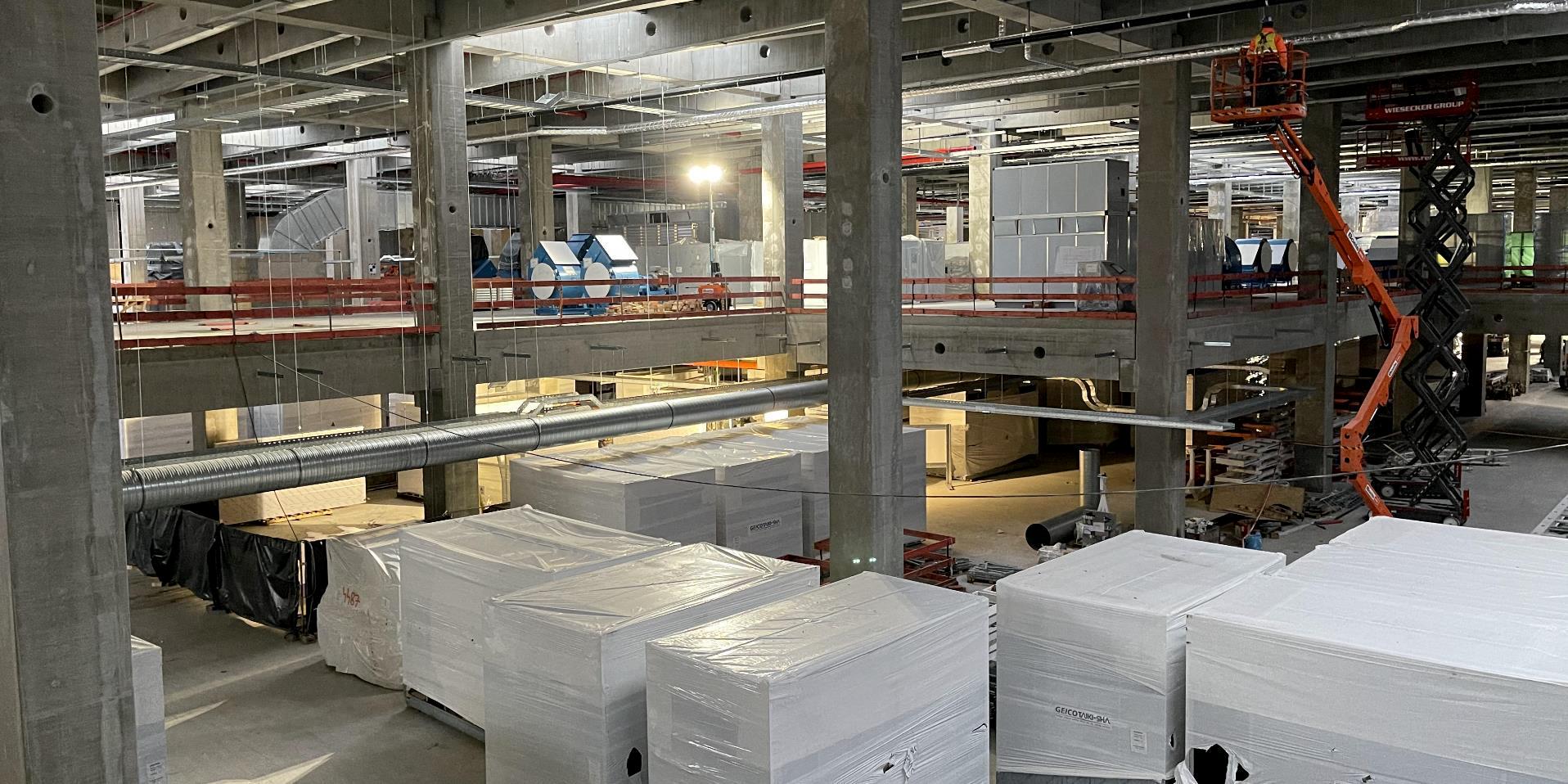
15:25 PT – Last few minutes guys. Here we go.
15:21 PT – Ok, guys, homestretch here. Who has bets on the earnings call starting on Elon Time? Then again, the earnings results are positive, so Tesla may be quite excited.
15:20 PT – I also just realized that the Model S and Model X refresh’s 17″ display is probably identical to the one used in the Cybertruck. Now I’m wondering if the Semi will use two of these screens. Kinda makes sense, doesn’t it?
15:15 PT – Also noteworthy is that the Model S and Model X refresh is now taking the fight to the world’s best luxury sedans with in terms of comfort as well. As could be seen in Tesla’s online configurator, both flagship vehicles are now equipped with a 22-speaker system with new microphone setup, which paves the way for active noise canceling tech. We reported on this recently, as could be seen here.
15:00 PT – Another thing that’s particularly notable is Tesla’s subtle, continued efforts to kill the FUD against electric cars. The Model S and Model X refresh are both equipped with a heat pump, which should enable the flagship vehicles to perform five times as many high-speed quarter-mile runs as before. Repeatability? Check.
14:45 PT – Several things stick out from the Q4 FY 2020 Update Letter. I’m particularly impressed with the company’s performance in its Energy business. Tesla Energy has long been underrated, and it’s always pushed to the background by the company’s auto business. But every quarter, Tesla Energy is becoming more and more prominent. In 2020, energy battery deployment surpassed 3 GWh for the first time. That’s some serious momentum.
14:30 PT – Well, well, well, looks like I’m early this time around. Please do check back in a bit as we will be covering the entire Q&A session. There’s usually a ton of interesting tidbits of information that get shared in Tesla’s earnings calls. Some analysts’ questions are also usually unforgettable.
14:15 PT – Good day, everyone, and welcome to another live blog of Tesla’s earnings call! While Tesla missed Wall Street’s EPS estimates, the company did post a huge profit and its war chest is very formidable now. But all the exciting financials aside, there’s very little doubt that the EV community is currently most excited about the Model S and Model X refresh. The wait for these vehicles has been significant, but boy oh boy, are they worth it.
Don’t hesitate to contact us for news tips. Just send a message to tips@teslarati.com to give us a heads up.

Investor's Corner
SpaceX IPO is coming, CEO Elon Musk confirms
However, it appears Musk is ready for SpaceX to go public, as Ars Technica Senior Space Editor Eric Berger wrote an op-ed that indicated he thought SpaceX would go public soon. Musk replied, basically confirming it.

Elon Musk confirmed through a post on X that a SpaceX initial public offering (IPO) is on the way after hinting at it several times earlier this year.
It also comes one day after Bloomberg reported that SpaceX was aiming for a valuation of $1.5 trillion, adding that it wanted to raise $30 billion.
Musk has been transparent for most of the year that he wanted to try to figure out a way to get Tesla shareholders to invest in SpaceX, giving them access to the stock.
He has also recognized the issues of having a public stock, like litigation exposure, quarterly reporting pressures, and other inconveniences.
However, it appears Musk is ready for SpaceX to go public, as Ars Technica Senior Space Editor Eric Berger wrote an op-ed that indicated he thought SpaceX would go public soon.
Musk replied, basically confirming it:
As usual, Eric is accurate
— Elon Musk (@elonmusk) December 10, 2025
Berger believes the IPO would help support the need for $30 billion or more in capital needed to fund AI integration projects, such as space-based data centers and lunar satellite factories. Musk confirmed recently that SpaceX “will be doing” data centers in orbit.
AI appears to be a “key part” of SpaceX getting to Musk, Berger also wrote. When writing about whether or not Optimus is a viable project and product for the company, he says that none of that matters. Musk thinks it is, and that’s all that matters.
It seems like Musk has certainly mulled something this big for a very long time, and the idea of taking SpaceX public is not just likely; it is necessary for the company to get to Mars.
The details of when SpaceX will finally hit that public status are not known. Many of the reports that came out over the past few days indicate it would happen in 2026, so sooner rather than later.
But there are a lot of things on Musk’s plate early next year, especially with Cybercab production, the potential launch of Unsupervised Full Self-Driving, and the Roadster unveiling, all planned for Q1.
Investor's Corner
Tesla Full Self-Driving statistic impresses Wall Street firm: ‘Very close to unsupervised’
The data shows there was a significant jump in miles traveled between interventions as Tesla transitioned drivers to v14.1 back in October. The FSD Community Tracker saw a jump from 441 miles to over 9,200 miles, the most significant improvement in four years.

Tesla Full Self-Driving performance and statistics continue to impress everyone, from retail investors to Wall Street firms. However, one analyst believes Tesla’s driving suite is “very close” to achieving unsupervised self-driving.
On Tuesday, Piper Sandler analyst Alexander Potter said that Tesla’s recent launch of Full Self-Driving version 14 increased the number of miles traveled between interventions by a drastic margin, based on data compiled by a Full Self-Driving Community Tracker.
🚨 Piper Sandler reiterated its Overweight rating and $500 PT on Tesla $TSLA stock
Analyst Alexander Potter said FSD is near full autonomy and latest versions showed the largest improvement in disengagements, from 440 miles to 9,200 miles between critical interventions pic.twitter.com/u4WCLfZcA9
— TESLARATI (@Teslarati) December 9, 2025
The data shows there was a significant jump in miles traveled between interventions as Tesla transitioned drivers to v14.1 back in October. The FSD Community Tracker saw a jump from 441 miles to over 9,200 miles, the most significant improvement in four years.
Interestingly, there was a slight dip in the miles traveled between interventions with the release of v14.2. Piper Sandler said investor interest in FSD has increased.
Full Self-Driving has displayed several improvements with v14, including the introduction of Arrival Options that allow specific parking situations to be chosen by the driver prior to arriving at the destination. Owners can choose from Street Parking, Parking Garages, Parking Lots, Chargers, and Driveways.
Additionally, the overall improvements in performance from v13 have been evident through smoother operation, fewer mistakes during routine operation, and a more refined decision-making process.
Early versions of v14 exhibited stuttering and brake stabbing, but Tesla did a great job of confronting the issue and eliminating it altogether with the release of v14.2.
Tesla CEO Elon Musk also recently stated that the current v14.2 FSD suite is also less restrictive with drivers looking at their phones, which has caused some controversy within the community.
Although we tested it and found there were fewer nudges by the driver monitoring system to push eyes back to the road, we still would not recommend it due to laws and regulations.
Tesla Full Self-Driving v14.2.1 texting and driving: we tested it
With that being said, FSD is improving significantly with each larger rollout, and Musk believes the final piece of the puzzle will be unveiled with FSD v14.3, which could come later this year or early in 2026.
Piper Sandler reaffirmed its $500 price target on Tesla shares, as well as its ‘Overweight’ rating.
Investor's Corner
Tesla gets price target boost, but it’s not all sunshine and rainbows
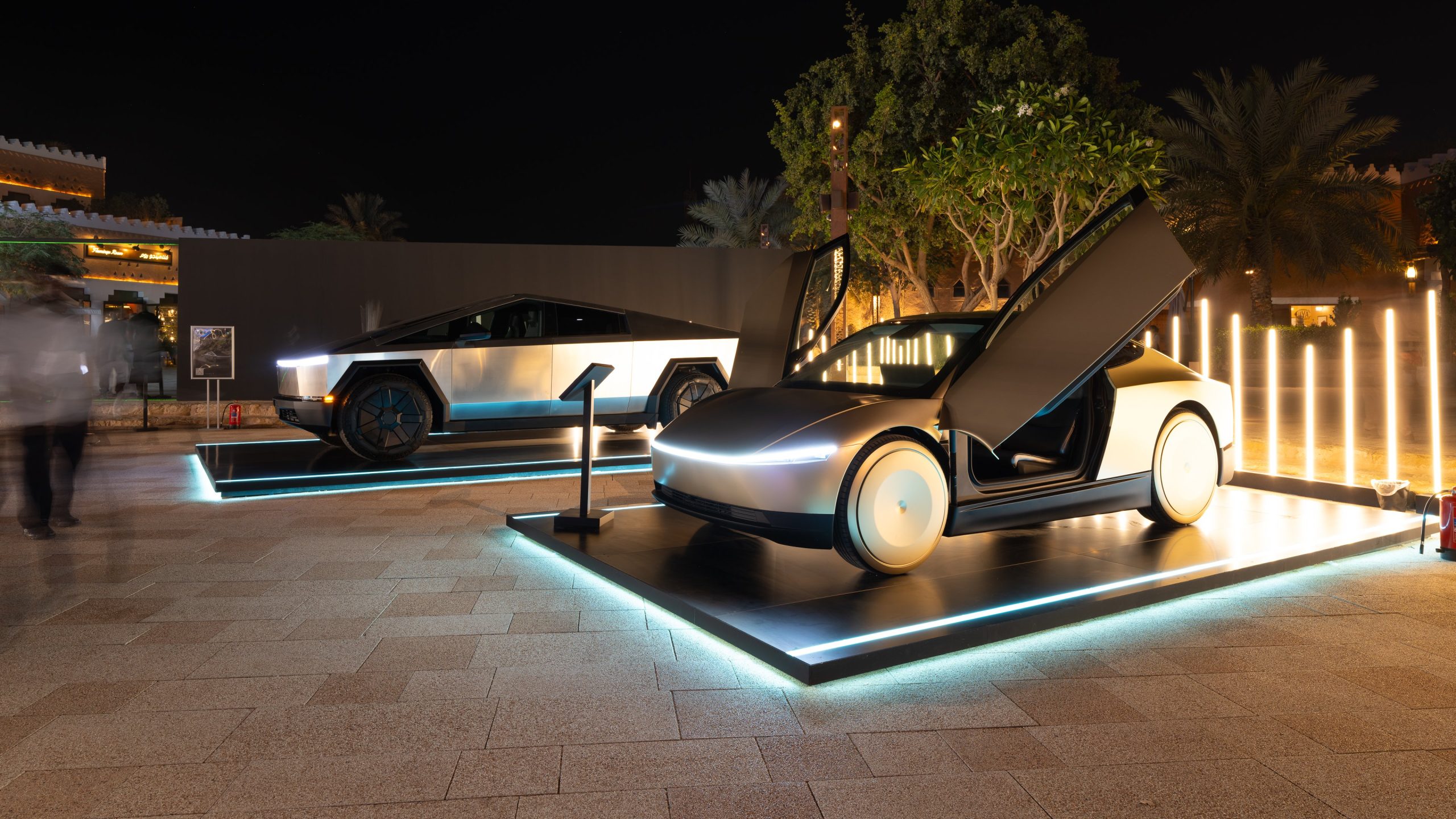
Tesla received a price target boost from Morgan Stanley, according to a new note on Monday morning, but there is some considerable caution also being communicated over the next year or so.
Morgan Stanley analyst Andrew Percoco took over Tesla coverage for the firm from longtime bull Adam Jonas, who appears to be focusing on embodied AI stocks and no longer automotive.
Percoco took over and immediately adjusted the price target for Tesla from $410 to $425, and changed its rating on shares from ‘Overweight’ to ‘Equal Weight.’
Percoco said he believes Tesla is the leading company in terms of electric vehicles, manufacturing, renewable energy, and real-world AI, so it deserves a premium valuation. However, he admits the high expectations for the company could provide for a “choppy trading environment” for the next year.
He wrote:
“However, high expectations on the latter have brought the stock closer to fair valuation. While it is well understood that Tesla is more than an auto manufacturer, we expect a choppy trading environment for the TSLA shares over the next 12 months, as we see downside to estimates, while the catalysts for its non-auto businesses appear priced at current levels.”
Percoco also added that if market cap hurdles are achieved, Morgan Stanley would reduce its price target by 7 percent.
Perhaps the biggest change with Percoco taking over the analysis for Jonas is how he will determine the value of each individual project. For example, he believes Optimus is worth about $60 per share of equity value.
He went on to describe the potential value of Full Self-Driving, highlighting its importance to the Tesla valuation:
“Full Self Driving (FSD) is the crown jewel of Tesla’s auto business; we believe that its leading-edge personal autonomous driving offering is a real game changer, and will remain a significant competitive advantage over its EV and non-EV peers. As Tesla continues to improve its platform with increased levels of autonomy (i.e., hands-off, eyes-off), it will revolutionize the personal driving experience. It remains to be seen if others will be able to keep pace.”
Additionally, Percoco outlined both bear and bull cases for the stock. He believes $860 per share, “which could be in play in the next 12 months if Tesla manages through the EV-downturn,” while also scaling Robotaxi, executing on unsupervised FSD, and scaling Optimus, is in play for the bull case.
Will Tesla thrive without the EV tax credit? Five reasons why they might
Meanwhile, the bear case is placed at $145 per share, and “assumes greater competition and margin pressure across all business lines, embedding zero value for humanoids, slowing the growth curve for Tesla’s robotaxi fleet to reflect regulatory challenges in scaling a vision-only perception stack, and lowering market share and margin profile for the autos and energy businesses.”
Currently, Tesla shares are trading at around $441.








